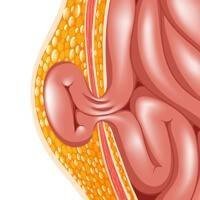Epidemiology
Hernias are a common disease among young children, mostly occurring in males. Due to an unclosed congenital canal in male groins, about 27% of men will suffer from hernias. Women have a lower risk of suffering from this disease, at a rate of about 3%.
What are Hernias?
Hernias, also known as “intestinal prolapses”, refer to masses formed by protruding internal organs from the abdominal wall. Most hernias will not heal on their own and cannot be treated with medication. As such, surgery is the only cure. If left untreated, the hernia has a change of growing in size. If the protruding organ becomes “stuck”, it will affect the flow and blood supply of the intestines. It may also cause serious complications such as intestinal infarction or bowel necrosis.












